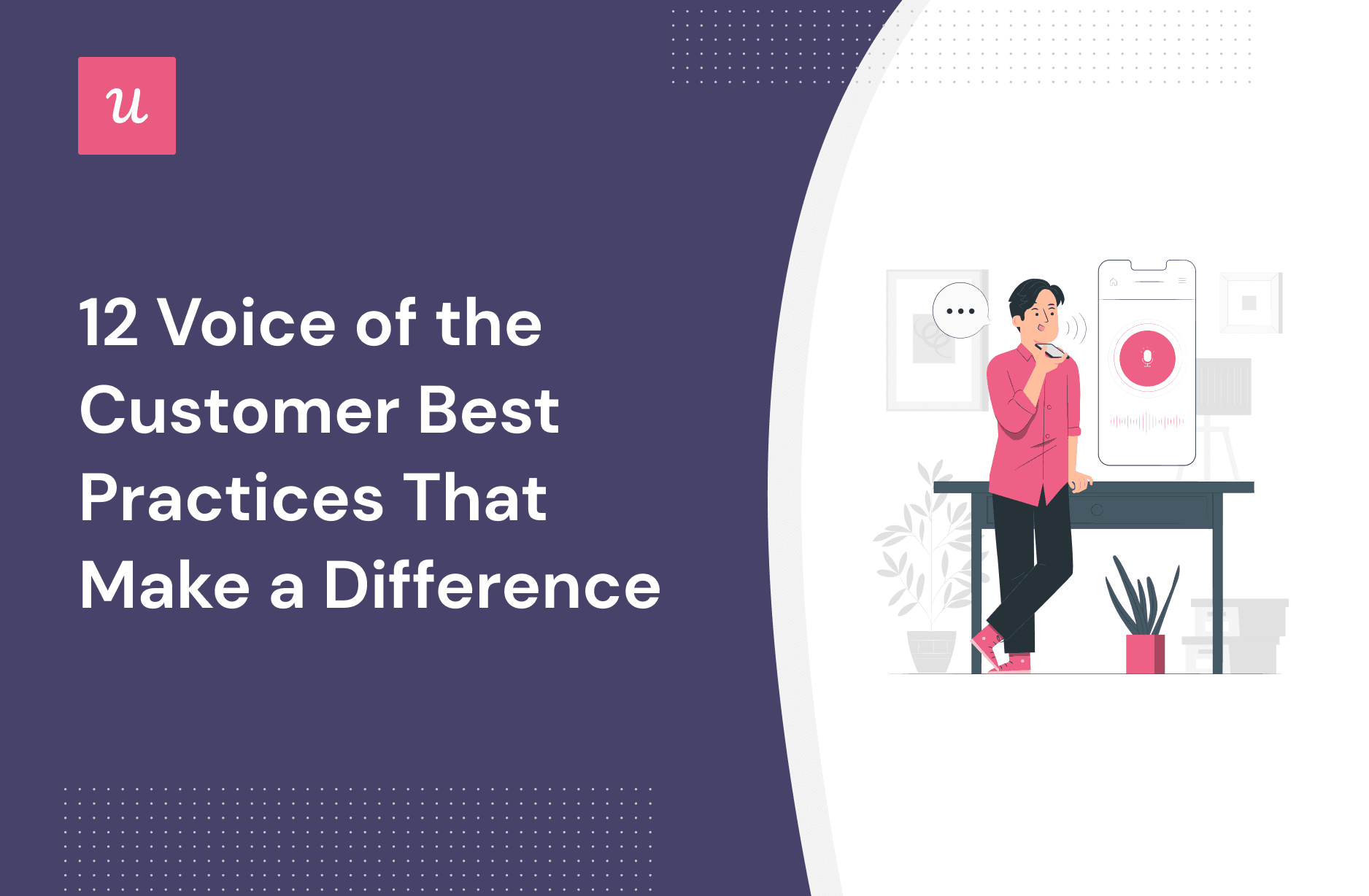
Have you ever wondered how to collect customer feedback efficiently and which voice of the customer best practices to follow?
Taking the voice of the customer (VOC) into account is essential when trying to maximize customer satisfaction, improve user sentiment, and get the most out of your marketing efforts.
In this article, we’re going to show you:
- Four reasons why VoC is important.
- Four methods for gathering VoC feedback.
- 12 VoC best practices.
Try Userpilot Now
See Why 1,000+ Teams Choose Userpilot

What is Voice of the Customer (VoC)?
The “voice of the customer” or VoC is a marketing term that summarizes the expectations, preferences, and dislikes of your target customers — often based on direct feedback surveys, reviews, or behavioral analytics.
It’s important to note that the goal of a successful voice of the customer isn’t just to gather feedback but also to utilize that customer data as part of the decision-making process. It’s similar to Colonel John Boyd’s OODA loop: Observe > Orient > Decide > Act.
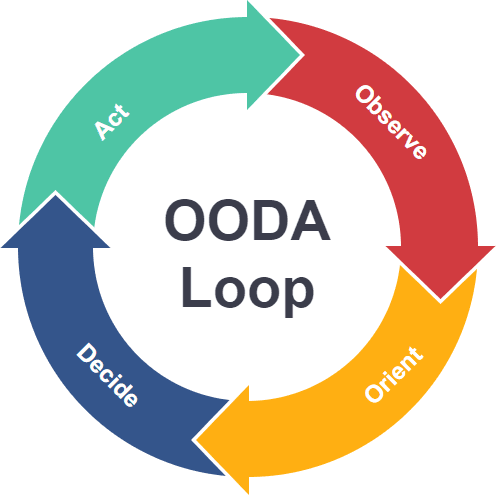
If you don’t act on the positive and negative feedback that your customer success team collects then you’ll never be able to meet customer expectations through your VoC program.
Why should you care about the Voice of the Customer?
Many SaaS companies think that collecting customer feedback is the only goal of a VoC program. In reality, it’s just the first step toward four primary end goals:
- Improving the customer experience. Collecting customer data is the best way to understand and meet customer expectations, leading to better user experiences.
- Increased user retention. Meeting expectations and optimizing the customer journey will help you retain users a lot longer. VoC programs also tend to increase customer loyalty since your users will see that you actually care about what they have to say.
Note: Acquiring new customers costs 5x to 25x more than retaining existing customers! - Boost revenue growth. As a byproduct of improving the customer experience and increasing customer retention, you’ll boost your SaaS company’s revenue and LTV. In fact, increasing retention by just 5% can increase profits by up to 95%.
- Benchmark customer programs (either support or success). Having VoC data readily available will make it easy to monitor customer opinions about your team. If customers feel like your support agents or customer success managers aren’t being very helpful, your survey data will reflect that.
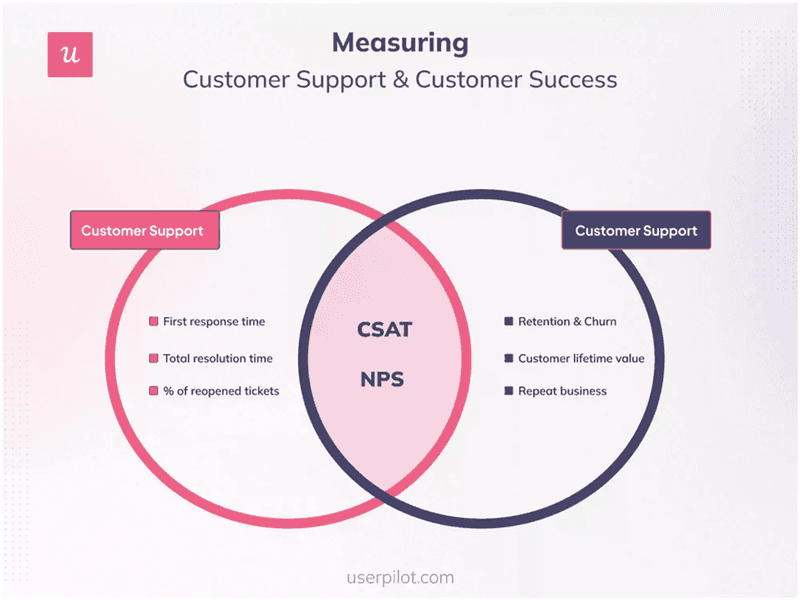
Voice of the Customer channels
Now that you know why listening to the voice of the customer and analyzing sentiment is important, you might be wondering what the best platform is for your VoC program. Well, there are more ways to collect data than ever before so let’s have a look at four options.
Customer surveys
If you’re just starting out with your VoC program then online customer surveys may be the most cost-effective research method. It won’t give you a complete picture of how all customers perceive your product but it’s an accessible way to collect VoC data and pick up on valuable insights.
It’s also easier to have customers participate in a mass survey rather than pre-scheduled, 1-on-1 interviews. In-app surveys are one of the most contextual ways to collect feedback for your VoC program since they pop up right after a user interacts with a feature.
This gives you a snapshot of how they’re feeling at that exact moment — which, in turn, makes your customer analytics more accurate. Some key metrics to grab from surveys are NPS and CSAT scores since these KPIs can tell you how to best improve customer satisfaction.
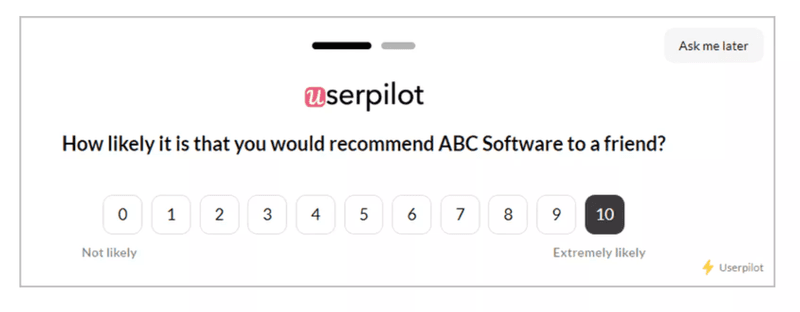
And speaking of gathering such key metrics, mobile surveys are a quick way to measure customer satisfaction, gather real-time feedback, and boost engagement.
Interviews
While interviews may take more effort to conduct, they’ll provide deeper insights that you wouldn’t get by simply looking at customer satisfaction scores.
The more personal nature of interviews shows that you care enough about the voice of the customer to approach them directly. This rapport builds a combination of trust and loyalty — both of which are imperative to customer retention.
Since customer interviews take more time than a survey, most companies offer rewards or discounts that incentivize customers to share their experiences.
A permanent 10% discount on their annual plan not only makes participating in interviews more appealing but also reduces the odds of them canceling their subscription in the future — since they feel they’ve earned the reduced rate they’re being billed at.
Social media monitoring
It’s important to realize that you don’t even need to interact with people to get a feel for a customer’s experience. Simply looking at what people say about your brand on social media could yield customer insights.
Look for brand mentions, groups discussing your product or service, and comments on your social media posts to see how positive (or negative) the average customer experience is.
Take this data with a grain of salt since there tends to be a loud majority (usually because unhappy users are more likely to post on social media). But analyzing sentiment on social media should be a core aspect of your voice of the customer programs.
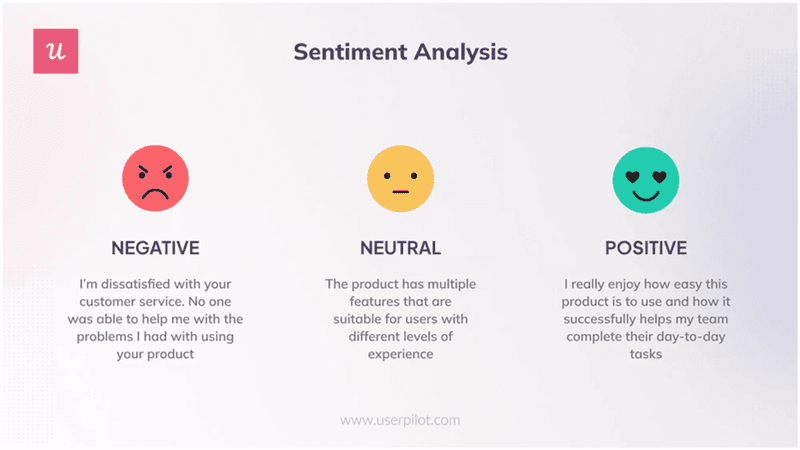
Online reviews
Online reviews are a tried-and-tested method of gauging the customer experience. If most reviews are negative (or come with mixed feelings) then that likely means you aren’t doing enough to optimize the customer experience.
On the other hand, an overwhelmingly positive trend in online reviews will tell you what people like most about your product or service so you can double down on those selling points ala Pareto.
But online reviews aren’t just important for nurturing customer loyalty with your existing users. It’s also a crucial part of acquiring new subscribers for your SaaS product. 95% of people say that reviews (both negative and positive) influence their purchasing decisions. This is why most brands should remember to ask for customer reviews on a regular basis.
Lastly, online reviews are one of the fastest ways for your product to spread through word of mouth — so take the time to ensure most reviews are positive!
What is a Voice of Customer strategy?
Before you start applying voice of the customer best practices, you need to set a strong foundation for your efforts. A solid voice of the customer strategy sets specific goals, tracks key metrics, and applies the right methodologies to achieve the desired result(s).
If your VoC programs come up short on any of these three pillars (goals, metrics, and methodology) then the overall success of the customer program could be dampened — or outright negated!
One of the most reliable strategies is to create a feedback loop that will provide data on customer preferences on an ongoing basis.
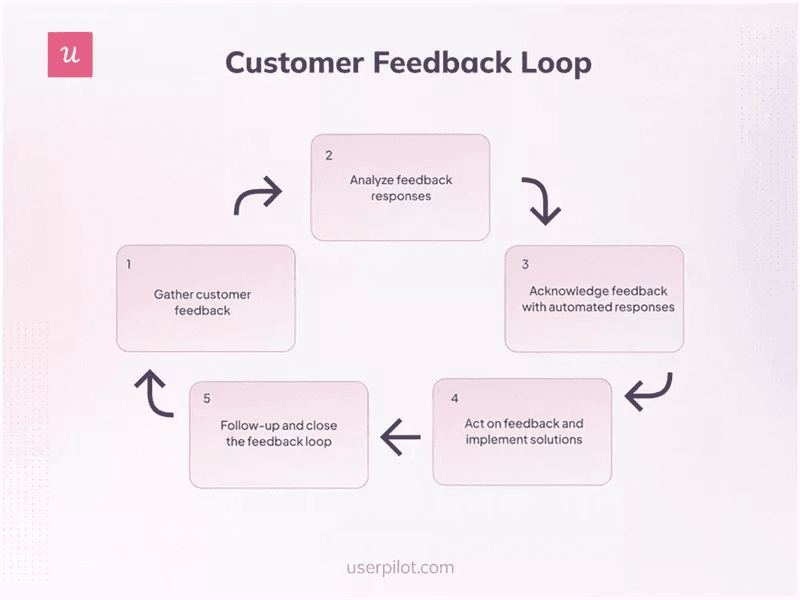
12 voice of the customer best practices
There’s no question that collecting consumer insights will give you a competitive advantage and help you streamline business processes in the future. However, execution is where most companies fall short.
If you want to capture feedback and relevant insights and guarantee your business’ success, then here are 12 VoC best practices to follow.
1. Know your objectives
Instead of creating a voice of customer (VoC) program just for the sake of having one, you need to set measurable objectives and treat your efforts as VoC tools used to achieve specific goals.
The more vague your goals are, the less effective voice of customer efforts will be.
Your objectives might be to:
- Improve customer satisfaction
- Optimize the customer experience
- Boost engagement with a specific feature
- Reduce user churn
Regardless of what your targets are, the goal-setting framework you use will determine the success of your voice of customer program. Furthermore, make sure you pinpoint the metrics that will be most effective at tracking progress toward those goals.
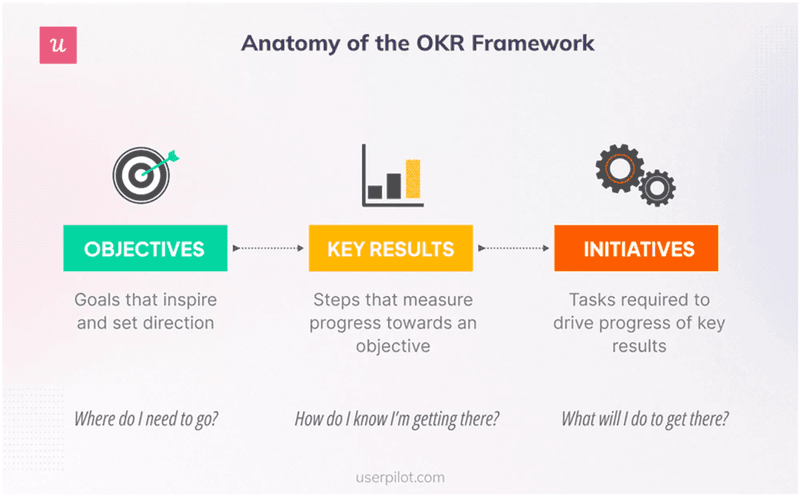
2. Consider multiple touchpoints
Next up in the list of our voice of the customer best practices, is measuring the customer experience across multiple touchpoints and stages in the user’s journey. Customer engagement isn’t a one-and-done deal but an ongoing process.
There are a few make-or-break moments in the customer lifecycle where you should stay in close contact with your users, such as:
- Post-onboarding
- After their first purchase
- Towards the end of their free trial period (or annual billing cycle)
- After they churn (through churn surveys)
Continuous customer engagement will help you identify any gaps in the customer experience and ensure that nothing slips through the cracks. You can also streamline the journey between each touch point by adopting an interactive onboarding approach.
3. Use multiple channels and methodologies
Not all customers are created equal, not all consumer behavior is uniform, and not all channels will be equally appealing to your users. Some customers might be on every social media platform while other customers may reply exclusively through email.
As such, you should engage customers through multiple channels to ensure that you get a holistic view of the customer experience — rather than a skewed perception isolated from a single data source.
You can also gather indirect feedback by reading through support queries, checking the top posts on online forums, or searching for posts that mentioned your brand without directly tagging the company.
You should also look at existing CRM data to see which channel(s) customers first interacted with your brand through. If you see that most of the customers in your CRM were engaged through Facebook rather than email (or vice versa) then you’ll know where to focus your future efforts.
4. Personalize for the right audience
There’s no better way to get ahead of the competition in crowded industries (like SaaS) than to provide a more personalized experience to customers. Users hate a boilerplate approach to customer success, so don’t ask users for feedback on a feature if they haven’t even tried it yet.
Segment your users based on their needs and behavior then personalize your VoC campaign to each cohort. Segmentation is the optimal path toward personalized engagement, thus deserving its spot among voice of the customer best practices.
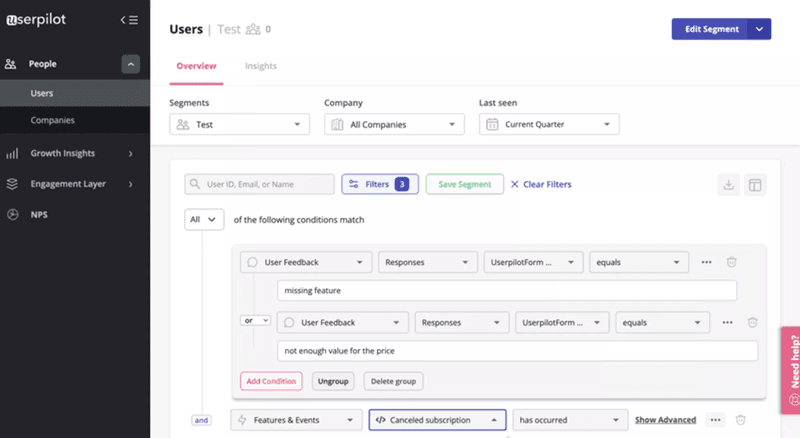
5. Don’t play it too safe
Of all the voice of the customer best practices, accepting constructive criticism is perhaps the most important. Even the largest data sets in the world won’t do you any good if you’re not ready to be objective about your product’s flaws and fix them accordingly.
Instead of fishing for compliments, ask your customers what they like about your competitors, whether or not they would consider switching to another product (and why), and what they would change about the product.
This doesn’t mean that you have to blindly follow every suggestion you get, but giving customers a chance to speak freely and answer tougher questions is the only path toward meaningful feedback.
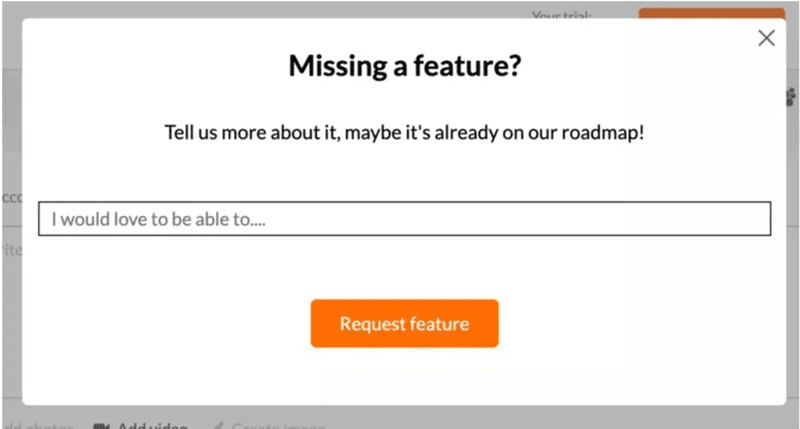
6. Respond and engage
Whenever you see negative social media comments, open with an apology then offer direct assistance to those disgruntled customers. This gives you a chance to make things right with customers while simultaneously getting more insight into their frustrations.
Setting responsive customer examples will also make other customers more likely to reach out in the future (instead of posting about your brand in a negative light).
Real-time engagement and quick response times are paramount regardless of whether the customers are sharing positive or negative feedback. These interactions also build rapport with customers which is likely going to make them less hostile in the future.
7. Spend time analyzing
Analyzing is going to make up a big part of your VoC efforts, so automating customer feedback mechanisms or using the best tools to sift through data will pay huge dividends in the long run.
Customer feedback software will not only save your team a lot of time, but it can also highlight trends, help you find the best course of action, and (potentially) predict future outcomes based on the data you’ve collected.
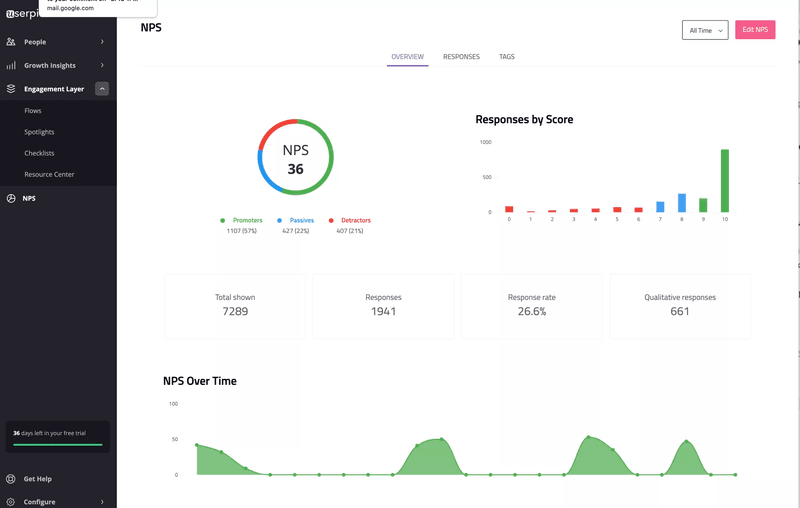
8. Make it a regular practice
Customer feedback can change drastically over time, so measuring it regularly is imperative. If you only collect feedback once a year, then you’re going to be working with outdated insights 90% of the time.
Continuously capture feedback at the most crucial touchpoints like subscription renewals and free trial conclusions to get your team the latest, most relevant data. That said, you shouldn’t turn things up to 11 and bombard your users with surveys.
In fact, asking for feedback too often could lead to survey fatigue which reduces the accuracy of your data and leads to a higher churn rate.
9. Share insights with the team
Whether you’re collecting feedback through customer tools or in-app surveys throughout every stage of the customer’s journey, these insights will be useless if the relevant stakeholders don’t get the memo.
It’s easy to forget that not everyone on your team faces customers, so sharing data from your voice of the customer program will help keep everyone on the same page. Ideally, you should be creating a pipeline that shares insights with the relevant teams as soon as possible.
Another approach would be to create user personas based on the customer data you collect so that every employee has a clearer understanding of who the product is for. Here’s a sample user persona template:
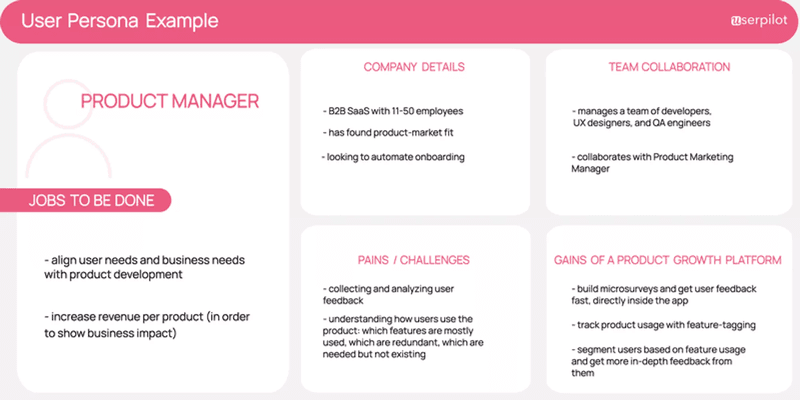
10. Share it externally
Sharing customer feedback as social proof is an effective way to build up a positive brand image that will attract more users, reviewers, and investors.
Uploading testimonials to your website, sharing CSAT scores on industry forums, or mentioning case studies at discussion panels are all great ways to generate good PR for your SaaS company.
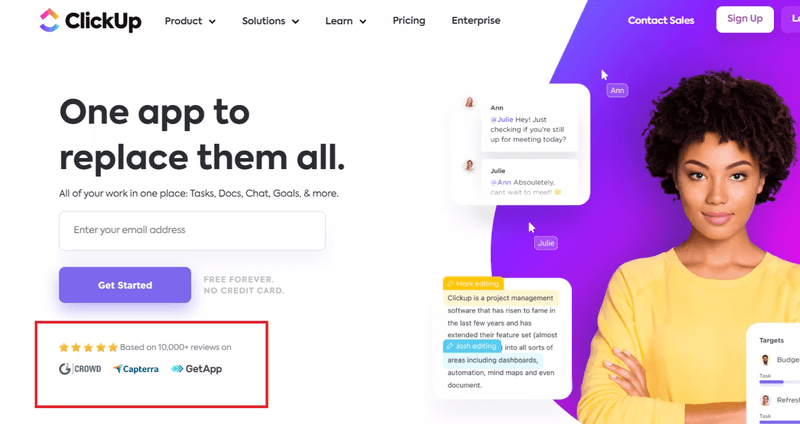
11. Gather employee feedback
Voice of employees or VoE is the other side of the coin that’s just as important as VoC. Giving your team members a chance to voice their opinions, make suggestions, and raise concerns will help you get new ideas from the people who understand the product best.
Note: Employee feedback is bound to be biased, so be sure to verify input by beta testing.
12. Apply learned lessons
At the end of the day, the most effective voice of customer (VoC) program is one that yields results. The only way to see an increase in customer success rates and push the entire organization forward is to actually apply changes based on the voice of customer insights.
Making empty promises to your users and not following through is often worse than not engaging them at all. On the flip side, applying the lessons you’ve learned can actually help you win back churned users.
TL;DR: Having teams ready to act on data and manage churn is a must when it comes to voice of the customer best practices.
What is the best tool for analyzing Voice of the Customer?
Userpilot is a great option for VoC campaigns since it not only captures but also analyzes customer feedback. You can use our tool to add in-app surveys to your product, monitor detailed analytics, spot user behavior insights, and integrate with other B2B software.
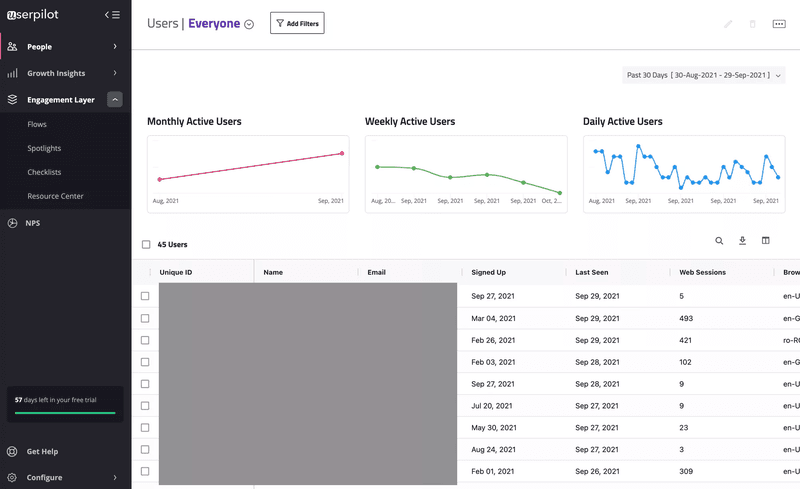
Conclusion
As you can see, understanding how your users feel is a non-negotiable step when trying to optimize the customer experience. If our voice of the customer best practices helped you, then why not share this article with your colleagues as a reminder to listen to their customers?
If you’re ready to start gathering feedback and making data-driven decisions then it’s time to sign up for your free Userpilot demo today!






